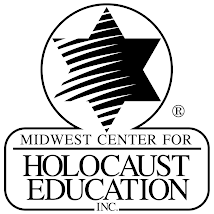It's amazing how quickly the end
of the school year can come once May begins. This past year I taught Advanced
Studies World History to 10th graders for the first time. When teaching a new
course I find it difficult to stay on a set schedule with the units. While I am
using materials created by others who have taught the course I like to adjust
things and find or create new lessons. The end result was that I found myself
with very little time at the end of the semester to cover World War II and the
Holocaust. Originally I had grand plans of spending a few weeks covering these
topics. Instead I only had a couple of weeks. I went into scramble mode to
think of ways to teach the Holocaust. The Echoes and Reflections
curriculum provided the solution. The great part of this curriculum is the
ability to use it in small or larger pieces. It includes very short (generally
1-2 minutes long) video clips as well as lesson plans with documents. Here is
how I used it.
- As part of our look at the Nazi ideology and antisemitism I showed Echoes & Reflections video clips from Lesson 2 (Part 1) which consisted of survivors discussing life before the war in Germany and examples of antisemitism.
- As part of the discussion on Nazi propaganda with emphasis on how Jews represented I showed Echoes & Reflections video clips - Lesson 2 (Part 2) in which survivors talk about their experience with Nazi propaganda.
- When it came to look at the ghettos I showed Echoes & Reflections video clips - Lesson 4 which includes testimony that provides a very thorough look at life in the ghettos. In addition I used the Echoes & Reflections student handouts on "The Ghettos" & "Excerpts from The Diary of Dawid Sierakowiak". There are questions that can be used to guide discussion.
- Finally, in studying Liberation I used Echoes & Reflections video clips - Lesson 8 which covers the topics of liberation and also the DP camps.
These weren't the only topics I
covered but they were the ones in which the Echoes and Reflections
curriculum proved most useful to meet my needs. I won't let this happen next
year. The Holocaust will be covered in greater detail over a longer time frame.
However I still plan to use the Echoes and Reflections curriculum
extensively. It is comforting to know that if I leave myself short on time that
I can fall back on the lessons from the curriculum. If you get the chance to
attend a training or just purchase the curriculum do it without hesitation. It
is thorough in its coverage of the Holocaust but can be easily used in small
segments to meet your needs.

